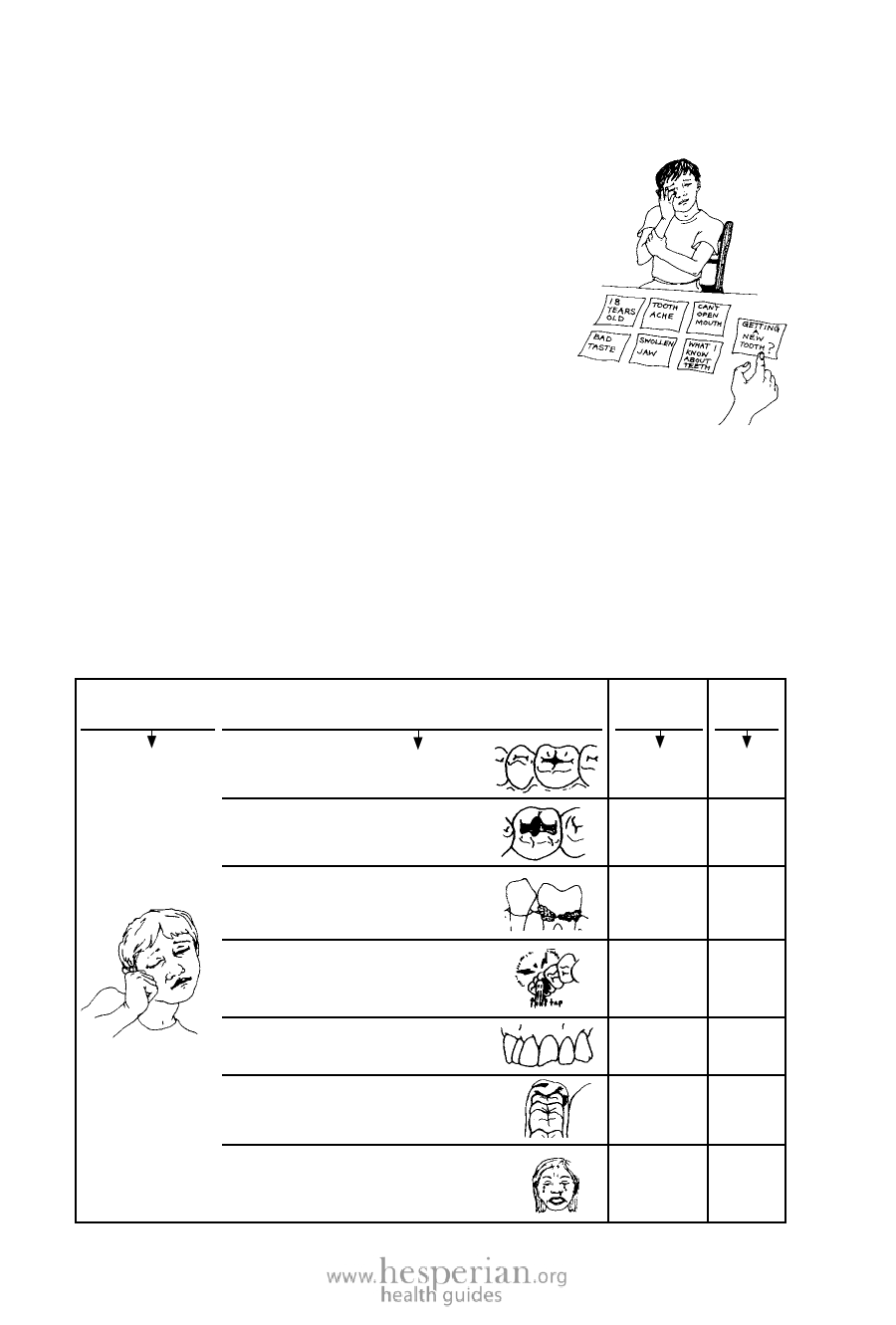
80 Where There Is No Dentist 2012
LEARN TO TELL SIMILAR PROBLEMS APART
If a person comes to you with a toothache or a sore
or a loose tooth, there are many possible causes for
each problem. The first thing you notice—the
toothache, sore or loose tooth—is your first step
to a diagnosis. To this you must add more information
before you can point to the most probable cause.
Put together what you have found with what
you already know about teeth and gums. You
can make a good diagnosis of a problem without
knowing a special name for it.
Usually it is easy to make a diagnosis. However,
sometimes you will not be sure, and these are the
times to seek the advice of a more experienced dental
worker. Never pretend to know something you do not. Only treat
problems that you are sure about and have supplies to treat properly.
See Where There Is No Doctor, p. w4.
Use the charts beginning here to help you make the diagnosis. For more
practice using charts to tell problems apart, see Chapter 21 of Helping
Health Workers Learn.
IF THE PERSON
HAS
AND YOU FIND OUT
THAT
It hurts only after eating or
drinking. There is a cavity, but the
tooth does not hurt when you tap it.
Part of the filling has fallen out, or is
cracked and ready to fall out. Eating
and drinking make the tooth hurt.
A TOOTHACHE
The tooth hurts when chewing food.
It may hurt when tapped, but there is
no cavity and the tooth looks healthy.
It hurts all the time—even when
person tries to sleep. The tooth
hurts when you tap it and it feels a
bit loose.
It hurts when person breathes in cold
air. The tooth was hit recently.
He cannot open his mouth properly.
Steady pain and a bad taste are
coming from the back of the mouth.
Several top teeth hurt, even more
when you tap them. She had a head
cold and can only breathe through
her mouth.
HE/SHE
SEE
MAY HAVE PAGE
a cavity
92
a cavity
under an
old filling
tartar
between
the teeth
92
131
an abscess
93
a cracked
or broken
tooth
a new tooth
growing in
96
100
an infected
sinus
95